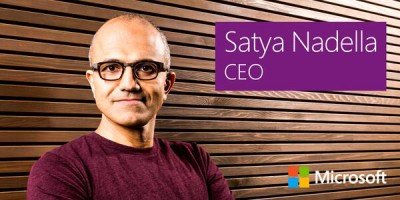“The Microsoft identity is focused around one single thing: It is about empowering you, as individuals and as business organizations, to be able to drive your agenda and achieve more”. These were the words of Satya Nadella who was talking about smart systems with own intelligence at the Convergence 2015 conference. The conference started by Satya Nadella approaching people by saying he believed we are at dawn of a new generation of business systems that are smart in themselves (and require less of manual intervention).

For the CEO of Microsoft, Convergence 2015 was a platform to tell the audience about what Microsoft thinks about the future of businesses, how they will change and finally, how Microsoft is changing to provide the businesses with tools to stay ahead and deliver properly. He described a range of changes to the way Microsoft is approaching business technology, which is changing at the speed of technology itself.
Microsoft is using a threefold approach to help businesses:
- Creating a new era of more personal computing (this hints at Windows 10 and the endless possibilities that come with it; Windows 10 is not just an operating system for personal computers but is also the future for cloud and IoT)
- Reinventing productivity and business processes (“where most important things happen inside our organizations”, he said
- The third approach is building an intelligent cloud (obviously referring to all the changes made and being made to facilitate remote computing, collaboration and IoT with Azure etc); the key focus on Microsoft is to provide a cloud that can adapt itself to the varied needs of different businesses
The third statement comes closely after it was mentioned by Microsoft that it is making Azure more flexible to help developers of Internet of Things (IoT) and similar smart systems. The focus is not on individual systems but on building “intelligent smart systems” through empowered individuals, businesses and enterprises. The latest scene on Microsoft end has indeed seen more emphasis on:
- Analytics (Microsoft brought R language and offered Azure for storing and dumping “useless” data);
- Cloud – We all have seen how changes were made to OneDrive, Office 365 and Azure; Office 365 is now free for students worldwide with endless free OneDrive storage for users of Office 365
- Data Sources – instead of just focusing on data dumps, the stress is on the point of generating data properly and storing it in a flawless methods for later processing (if required); with Big Data at core, data cannot be dispensed with; companies need to keep all data – because they cannot tell which data will required in the future; there should be practices where data is properly channeled automatically to storage systems directly from sources of data creation
The goal of empowering businesses will be done by focusing more on development of IoT as Microsoft thinks there will be 26 billion connected devices – creating some 22 ZB of data (business cannot store all that data at local premises; cloud has to intervene). If seen from above, all the three factors: data, cloud and IoT are intertwined and cannot be separated.
Nadella concluded by saying smart systems, with own intelligence, make sure everyone has the tools and capabilities to gain insights into data and use it to empower themselves to act on these insights.
Leave a Reply